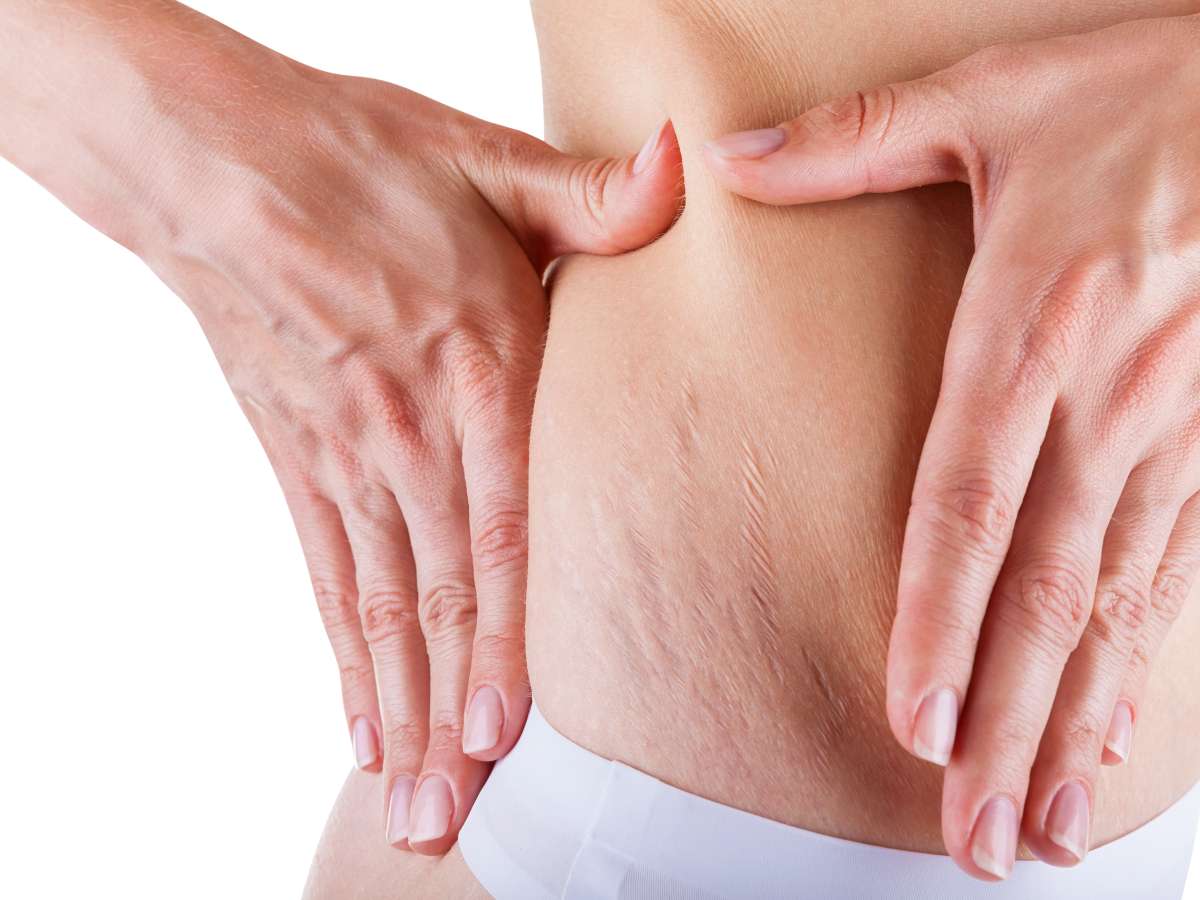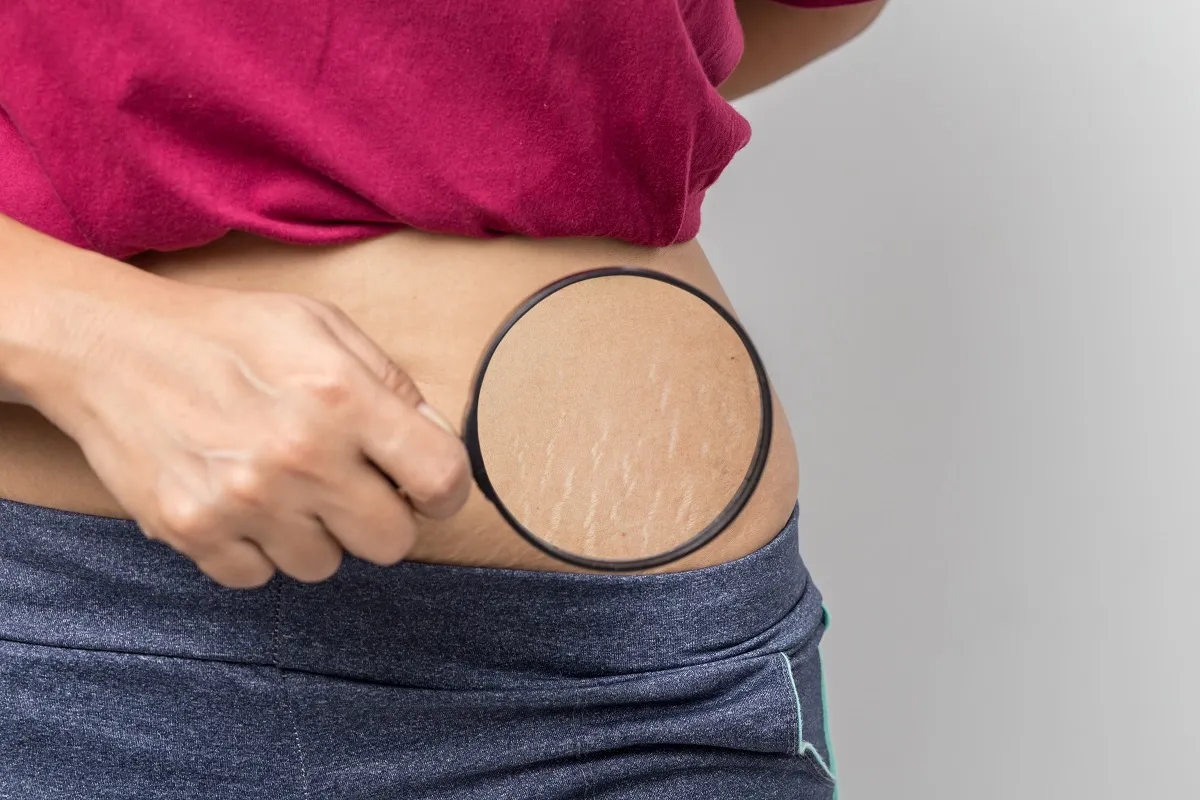Stretch marks are a common concern, especially during rapid growth or weight gain. While they are a natural part of the skin’s response to stretching, there are proactive measures you can take to minimize their appearance. This article will explore effective strategies to prevent stretch marks, covering skincare, nutrition, and lifestyle choices.
Preventing stretch marks is a concern for many individuals, particularly during rapid weight gain or significant bodily changes, such as pregnancy or adolescence. These distinct, often reddish or silvery streaks on the skin can be a source of self-consciousness and discomfort for some. While stretch marks commonly occur, especially in the abdomen, thighs, and breasts, individuals can take steps to reduce their likelihood or severity. In this article, we will look into lifestyle choices that can help individuals minimize the development of stretch marks. This will also help maintain healthier skin, offering practical guidance for those looking to preserve their skin’s elasticity and appearance.
1. Understanding Stretch Marks
a. What are Stretch Marks?
Stretch marks, medically known as striae, are visible lines on the skin that often appear during periods of rapid growth, such as pregnancy or adolescence. They occur when the skin’s elasticity undergoes stress, causing tearing in the dermis and the formation of scar tissue.
b. Factors Contributing to Stretch Marks

Understanding how to prevent stretch marks involves recognizing contributing factors. Genetics, hormonal changes, rapid weight gain, and certain medical conditions can increase the likelihood of developing stretch marks. Tailoring prevention methods to address these factors is key.
2. Hydration and Skincare
a. Hydration for Skin Elasticity
Keeping the skin well-hydrated is a fundamental aspect of preventing stretch marks. Hydrated skin is more elastic and resilient, reducing the likelihood of tearing. Regularly moisturizing with hydrating creams or oils helps maintain skin elasticity.
b. Vitamin-Rich Skincare

Skin nourishing with vitamins A, C, and E can enhance its resilience. These vitamins promote collagen production, which is crucial to skin elasticity. Include vitamin-rich skincare products into your routine to support your skin’s health.
3. Healthy Nutrition
a. Balanced Diet for Skin Health
Maintaining a balanced diet is important for preventing stretch marks. Include foods rich in antioxidants, such as fruits and vegetables, to support skin health. Consuming a variety of nutrients contributes to overall skin elasticity.
Also read: Diet And Nutrition Tips For Preconception
b. Collagen-Boosting Foods

Collagen is a protein that provides structure to the skin. Including collagen-boosting foods like bone broth, fish, and citrus fruits in your diet can help improve skin elasticity and reduce the risk of stretch marks.
4. Gradual Weight Management
a. Slow and Steady Weight Gain
Rapid weight gain is a common cause of stretch marks. To prevent them, aim for slow and steady weight management during pregnancy or other periods of growth. Gradual changes give your skin time to adapt.
b. Exercise for Skin Elasticity

Regular exercise not only contributes to overall health but also improves skin elasticity. Strength training can promote muscle tone, enhancing the skin’s ability to stretch without tearing.
5. Protective Clothing To Prevent Stretch Marks
a. Supportive Maternity Wear
During pregnancy, wearing supportive maternity clothing can help prevent stretch marks. Maternity belts and belly bands provide additional support to the growing abdomen, reducing tension on the skin.
b. Sun Protection

UV rays can affect skin elasticity and contribute to the development of stretch marks. Use sunscreen and protective clothing to shield your skin from harmful sun exposure, especially if you are prone to stretch marks.
6. Massage and Topical Treatments
a. Regular Massage
Gentle, regular massage promotes blood circulation and skin elasticity. Using moisturizers or oils during massages can enhance their effectiveness. Focusing on areas prone to stretch marks, such as the abdomen and thighs, is particularly beneficial.
Also read: Preparing For Birth: Perineal Massage And Kegel Exercises
b. Topical Treatments with Ingredients like Retinoids

Topical treatments containing ingredients like retinoids may help prevent stretch marks by promoting collagen production. However, it’s essential to consult with a doctor, especially during pregnancy, to ensure the safety of such treatments.
7. Managing Hormonal Changes To Prevent Stretch Marks
a. Hormonal Balance
Hormonal fluctuations, particularly during pregnancy, can influence the development of stretch marks. Maintaining hormonal balance through proper prenatal care is crucial. Consulting doctors can also contribute to preventing stretch marks.
b. Pregnancy Skincare Routine

Implementing a specialized skincare routine during pregnancy, including safe and recommended products, can address hormonal changes affecting the skin. Consult with doctors to create a skincare plan tailored to your needs.
Preventing stretch marks is a proactive process involving skincare, nutrition, lifestyle choices, and self-care. Understanding the factors that contribute to stretch marks allows for targeted prevention strategies. Whether through hydration, a balanced diet, or weight management, including these practices in your routine can contribute to maintaining skin elasticity and reducing stretch marks. While complete prevention may not be guaranteed, these methods empower individuals to embrace their changing bodies with confidence and care.

